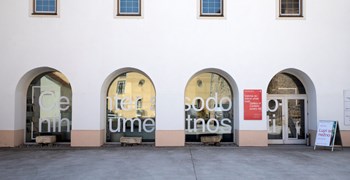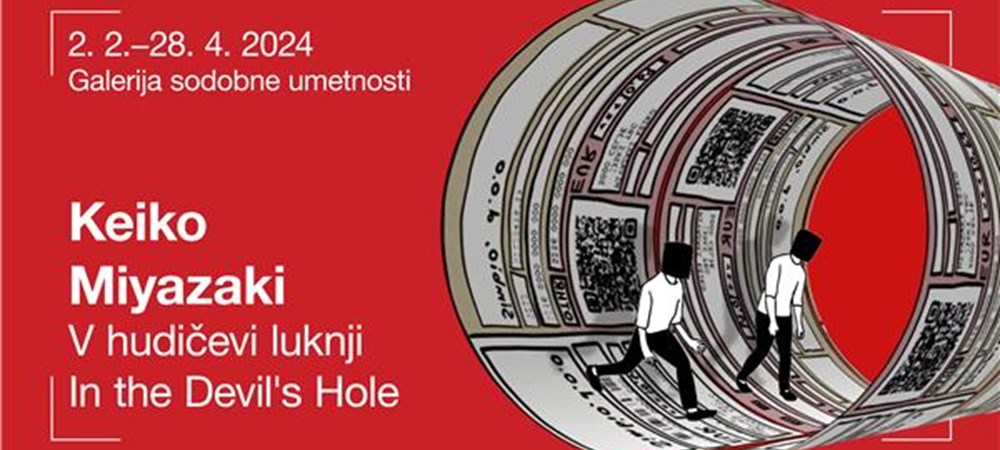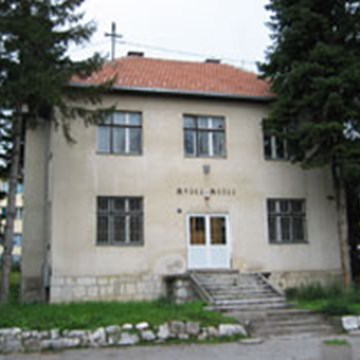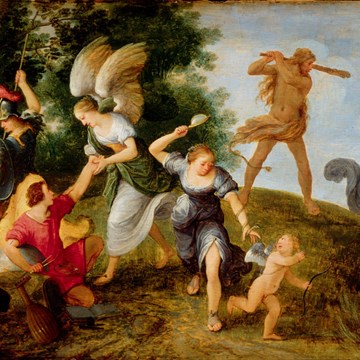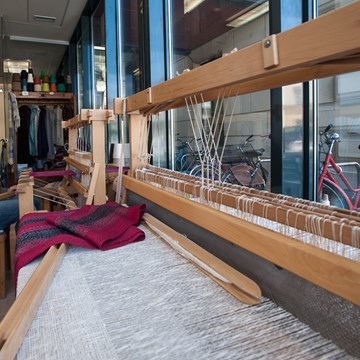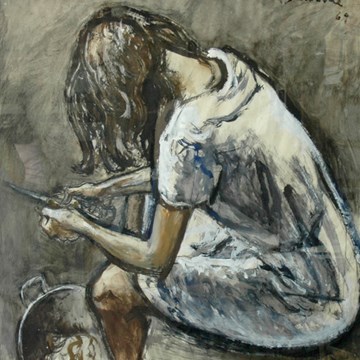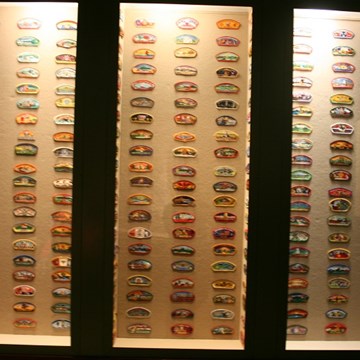Keiko Miyazaki: In The Devil's Hole
You are cordially invited to attend the opening of the exhibition at the Gallery of Contemporary Art, Trg celjskih knezov 8, Celje, on Friday, February 2 at 7 p.m.
Keiko Miyazaki’s solo art practice (she also works in temporary collectives) has so far focused primarily on the intimate world of memories, desires and secrets, using them to shed light on the rules, prejudices and taboos of the Western world. With this multimedia exhibition, which is her first major solo presentation and includes four new projects prepared specifically for the show, she continues to refer to the intimate and personal, but in the context of a reality tailored by the interests of contemporary capitalism. The exhibition In the Devil’s Hole is above all a mirror of the world we live in, a picture of reality without illusions. It tells of the increasing intensity of work at the expense of personal life, the strengthening of the cult of youth and the transformation of ageing and the ageing body into a consumer category, as well as the rise of the ideology of ageism, which, with its disparaging and discriminatory attitude towards older people, is in fact a shameless violation of the dignity of each of us, because sooner or later we will all, for the most part, be confronted with old age.
Miyazaki begins the exhibition with the installation Love Does not Pay the Rent, whereby, starting from the traumatic position of love, which has a limited amount of time at its disposal due to the demands of today’s society, she thematises the reality of the relentless cogs of contemporary capitalism. It consists of four animations, 3D-printed figures and a photographic enlargement. In one of the animations, the focus is on a spinning wheel (the eye catches the drawn payment slips which make it up) and a couple caught in the wheel’s repetitive whirl, a kind of perpetuum mobile, driven by their energy. In the second animation, the same couple can be seen turning the wheel of a press with all their might, giving it all their time to squeeze out nothing. In all four animations, the telling reality of the existing world is depicted in just a few images: being trapped in the demands of constant economic growth and constant productivity (and consumption), which cost energy and time and, above all, bring exhaustion, while the profits flow elsewhere. In the continuation of the installation, Miyazaki emphasises the extension of time devoted to work and the reduction of leisure time with the miniature figures of a couple in various positions, searching (all too often unsuccessfully) for the ideal intertwining of bodies to maintain closeness to their significant other for as long as possible, and a photographic enlargement of the couple dominating the space, with the caption “love does not pay the rent” attracting the eye. With the photograph and the figures of the couple, the artist highlights the gap between reality and desire, which tends to establish itself as an illusion that is difficult to achieve, while with the installation as a whole, she emphasises the thought, wrapped in ironic bitterness: we give everything to capitalism, our life, body, soul, love and time. With the images showing how we are trapped in the wheel of capitalism, the work also encourages reflection on the widely held view that it is difficult to imagine a different political and economic order to the one we live in. It seems that Fisher’s assertion from 2009 (in the book Capitalist Realism), stating that people no longer find the lack of an alternative problematic because capitalism has become so entrenched that it has colonised the dreaming part of the population’s consciousness, remains pertinent, or is perhaps even more so today, despite the rise of new economic forms and social movements.
The next work, the video projection Qudragenarian, which with its large scale takes up the entire wall of the space in which it is installed, shows a close-up of a woman’s face in slow motion. The skin and muscles, which have lost the perfect firmness of youth, form strange, sometimes grotesquely exaggerated shapes as they slowly move from side to side. With a tattoo in the form of a consumer code imprinted on the face, the work speaks of contemporaneity, which has enriched and pushed to extremes the difficult confrontation with ageing, especially of women, which has always been present, even in the past, in some cultures more than others, with the imperative of youth and a youthful body, the intensification of the desire to preserve youthfulness, media representation and aggressive advertising. Ageing, which has inscribed itself as a threat in the consciousness of contemporary humans, is also thematised by the artist in the work Inevitable, which consists of two different visual situations through the alternation of light and dark. Images of bodies, including sagging breasts, flabby bellies and thighs painted with fluorescent pigment, appear gently on the walls in the dark and are replaced in the light by an image of time, decay and finality: an installation with a thin stream of fine sand trickling slowly but irrepressibly to the floor.
Negative attitudes towards older people that push them to the margins of society are nothing new – they have existed throughout history. Only a few periods and cultures exist that are shining exceptions in this respect. The installation Ubasuteyama, a poetic and monumental work that rounds off the exhibition, with a multitude of glass jars filled with water in different shades of colour, origami, moss, tiny roots and black, tiny silhouettes of old people on each jar, is based on an old legend that tells that old people, when they were no longer useful, were taken to a mountain and left there to die. The installation, cloaked in a kind of magical realism, is on the one hand the artist’s tribute to the elderly and all the wisdom and experience they possess. On the other hand, it is a work that problematises contemporaneity, which, in the face of the global problem of an ageing population, systematically degrades seniors to a socially undesirable group of people who, as soon as they are no longer productive, are merely a burden and even a danger to others. It also prompts reflection on the widespread discourse of active ageing, which focuses on promoting the active inclusion of the elderly into society. It seems that this discourse is less about the quality of life and satisfaction of the ageing and more about an attempt to keep people permanently in the labour market, even in old age, which is above all part of neoliberal ideology.
Keiko Miyazaki was born in Ehime, Japan. She completed a BA and MA in Art at Northumbria University in England. She continued her education at the Academy of Fine Arts and Design in Ljubljana (2004) and at the Academy of Arts in Krakow (2005). Her work is based on the observation of social structures and taboos. She expresses herself through a variety of media, from installation, painting, animation, performance to video. As an artist she works independently and in art groups IvAnKe (Iva Tratnik, Andreja Džakušič, Keiko Miyazaki), AnKo (Andreja Džakušič, Keiko Miyazaki), Dr. Xenia (Andreja Džakušič, Simon Macuh, Keiko Miyazaki, Iva Tratnik). She has received the following awards for her work: Outstanding Award (Sakaide Art Grand Prix 1999), Jury Award (Cosmos Cable TV Award 2005), Culture Contributor of Shikokuchuo City. She lives and works in Celje.
Zavod Celeia Celje – Center sodobnih umetnosti
Curator: Irena Čerčnik
Text: Irena Čerčnik
Supported by: Mestna občina Celje
Exhibitions and events

Karin Vrbek: People Are Like Houses
Temporary exhibition at Center for Contemporary Arts Celje until 26.01.2025The artist Karin Vrbek does not limit her artistic practice to a specific medium, but combines the use of video, sound, installation, writing and the creation of visual messages into holistic...

VELVET 5: Pleasure – A Dreamscape
Temporary exhibition at Center for Contemporary Arts Celje until 12.01.2025Maksim Azarkevič, Ana Baraga, Tjaša Bon, Maša Bornšek, Evia Brvar Ravnikar, Sabina Colnar, Vitjan Črešnar Štaus, Miha Erič, Peter Ferlan, Nina Kavzar, Samira Kentrič, Danaja Kurnik, Anja Kranjc,...

How are you in Celje? How are you in Graz?
Temporary exhibition at Center for Contemporary Arts Celje until 30.03.2025Daniela Brasil, Andreja Džakušič, Maja Hodošček, Luise Höggerl, Mark Požlep, Mojca Senegačnik, Helene Thümmel, Anton Tkachenko, Karin Vrbek, zweintopf Celje, Slovenia & Graz, Austria In the...
Activities from this museum
We don't have anything to show you here.
